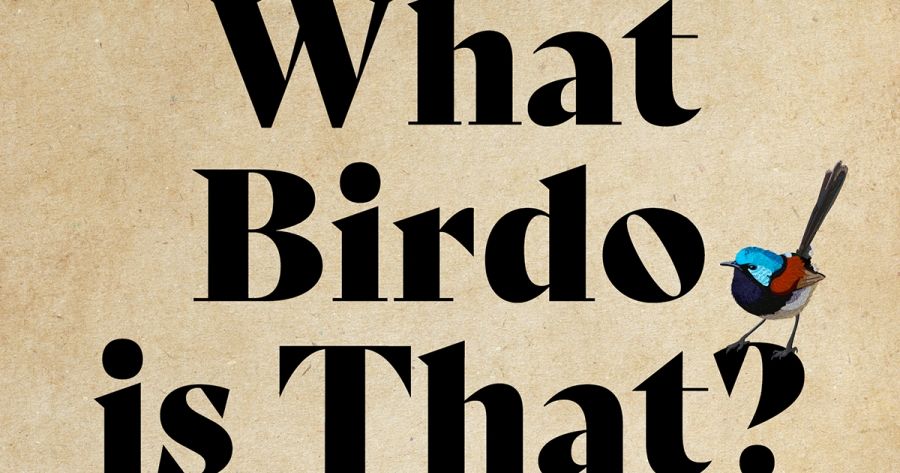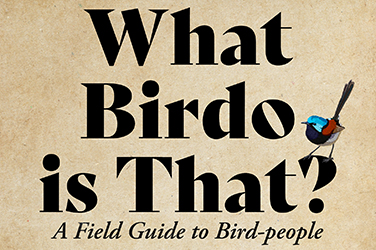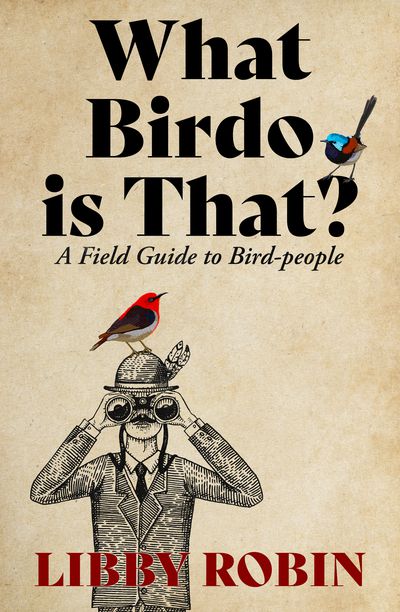
- Free Article: No
- Contents Category: Ornithology
- Review Article: Yes
- Article Title: Bird noticers
- Article Subtitle: A curious new book from Libby Robin
- Online Only: No
- Custom Highlight Text:
Eminent ecological historian Libby Robin has produced a curious book that examines the changing interests and roles played by those Australians who ‘notice birds and feel they need our help’. She aims to examine the rise of the nature conservation movement in Australia, using ‘Australia’s bird-people’ as a sample of Australians with a love of nature.
- Featured Image (400px * 250px):

- Alt Tag (Featured Image): Peter Menkhorst reviews 'What Birdo Is That? A field guide to bird people' by Libby Robin
- Book 1 Title: What Birdo is That?
- Book 1 Subtitle: A field guide to bird people
- Book 1 Biblio: Melbourne University Publishing, $40 pb, 272 pp
- Book 1 Cover Small (400 x 600):

- Book 1 Cover (800 x 1200):

This book builds on Robin’s previous detailed history of the Royal Australasian Ornithologists Union (RAOU), The Flight of the Emu: A hundred years of Australian Ornithology 1901–2001 (2001), but with the aim to focus more on people than institutions. However, that point of difference is not obvious.
While I understand that key Australian bird institutions were established in the twentieth century – notably the Bird Observers Club, the RAOU, and most government science agencies – the book never really comes to grips with the nineteenth or early twenty-first centuries. This bias towards the twentieth century is disappointing. Judging by the title and blurb, I was expecting a broader coverage of the impact of social changes on the evolution of bird watching, from the hardy field collectors employed by wealthy gentlemen to the current rapidly expanding section of our society who are passionate bird watchers and, increasingly, bird photographers.
If you have read The Flight of the Emu, many of the subjects and personalities will seem familiar; indeed, some chapters are essentially unchanged. Three pages covering the nineteenth century focus almost entirely on one man, John Gould. The final four chapters are based mostly in the twenty-first century. They wander between material of direct relevance to bird-people and bird conservation, and discourses on conservation philosophy, including cases of questionable relevance to the book’s aim.
A major shortcoming is the lack of attention to the impact of new technologies. Bird watchers have taken to the digital communication revolution with alacrity. Beginning with an email chatline Birding-aus, in the mid-1990s and now via numerous Facebook groups, Australian bird watchers enthusiastically exchange information and photographs about all manner of bird-related subjects. Respectful use of social media has led to greatly increased levels of knowledge among bird watchers. In recent decades, vastly superior optics and digital photography have elevated our capacity to identify species, sexes, and age classes in the field, resulting in higher satisfaction and, in turn, greater enthusiasm. Mobile phone apps such as eBird give immediate access to enormous databases of species locality records linked to GPS to provide instantaneous lists of species likely to be found in your immediate surrounds, no matter where you are on the surface of the earth. These billions of records were provided freely by mostly amateur bird watchers within the past twenty years. These revolutionary new tools have resulted in a boom in the popularity of bird watching, including among women, improving the gender balance in what had been a mostly male pastime. These new bird watchers inevitably become conservationists in their own way.
Robin is somewhat dismissive of ‘twitchers’ – bird watchers who will go to almost any length to add a species to their meticulously maintained lists of species personally sighted and identified. However, in this time of accelerating climate change, sightings of vagrant birds (individuals found well outside the usual geographic range of their species) are becoming more important as they may provide evidence of a species responding to fundamental changes to its habitat. As a group, the worldwide community of twitchers is possibly more aware of the rapid ecological changes now taking place than almost any other demographic. In Australia in recent decades, twitchers have played a critical role in rewriting our understanding of the diversity and numbers of seabirds that use Australia’s maritime zone and the species present on our island dependencies.
Robin also presents a sugar-coated view of the protracted, messy, and contentious reformation of Australia’s two biggest bird organisations during the early 2000s as they both struggled to survive in a changing society. Poor financial management, falling membership, low meeting attendance, and declining participation in organised field trips threatened both organisations. Eventually, in 2011, they amalgamated to form Birdlife Australia. The new organisation is heavily focused on conservation, as it should be, but it is less invested in other areas previously fulfilled, notably the social side of bird watching. While this has irritated some, at least Birdlife Australia’s future seems more certain.
After pondering this book, I have concluded that my disappointment has two main sources: first, the disconnect between the impression created by the title and the publisher’s blurb and the actual content: second, my familiarity with Robin’s 2001 work leading to my assessment that updating of the shared content has been minimal and inconsistent.
However, readers without such a background will find a great deal that is of interest, backed by solid research and scholarship. This book will bring Robin’s insights to a new audience, but I can’t help thinking that it is also an opportunity lost. With its balance skewed to the past, this field guide is more a guide to the twentieth-century Australian bird watching establishment than to the burgeoning world bird proletariat of the twenty-first century.
Correction:
An earlier version of this review referred to Neville Cayley as Neville Caley.


Comments powered by CComment